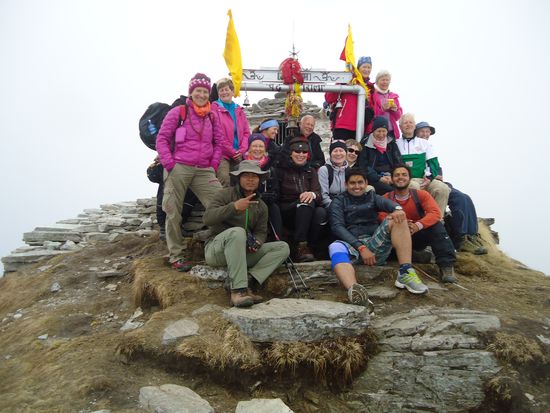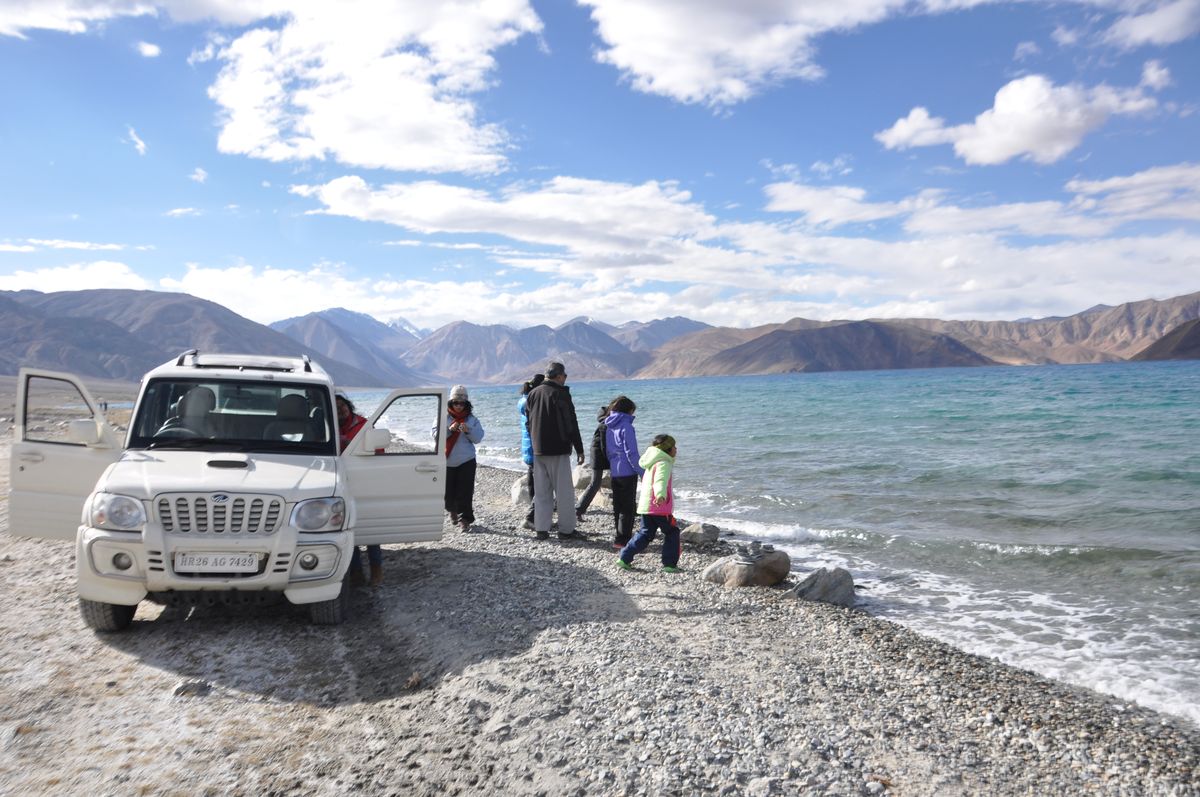Markha Valley Trek
Set foot in Ladakh’s hidden Himalayan valleys
Discover Tibetan culture in the remote reaches of India`s Himalayas. Wander around Ladakh`s markets and the impressive Buddhist monasteries. After acclimatizing, set forth on your 9-day trek through Markha Valley, climbing to over 5000m, taking in dramatic mountain scenery.
On this trip you will encounter smiling villagers, fluttering Tibetan prayer flags, snow-capped mountains and meandering glacial streams. Enjoy the hospitality of a traditional homestay and let our experienced guides and sturdy mountain horses show you a side of the Himalayas very few have ever seen.
Trip Highlights
- Tibetan markets & colorful Buddhist monasteries
- Trek through sublime Himalayan scenery
- Stay in remote mountain villages
- Mountain horses carry your luggage
- Camp in spectacular locations
Season – July/August
Itinerary
Day 1: Delhi – Leh
The flight to Leh is truly breathtaking. Sit on the left handside of the aircraft for spectacular views of the snowcapped Himalayan mountain range. The plane touches down in what must be one of the most dramatic runways in the world. Your driver will greet you at the airport for transfer to hotel. Leh is at an elevation of 3500m above sea level, so complete rest is advised for this day to get acclimatized. Enjoy a light lunch at the hotel. Late afternoon, visit Leh Palace, modeled on the Tibetan Potala Palace in Lhasa. From there we move on to Shanti Stupa which enjoys stunning views of Leh valley. Sit on the edge of the cliff-face and watch the valley change colour under the setting sun. On the way back your driver will drop you off at Leh Market. Wander through the bazaar and back to the hotel by foot. Feast on the excellent buffet dinner. Overnight in Leh.
Day 2: Leh (Sightseeing)
After breakfast, set off for sightseeing to some of the ancient monasteries in this area:
Shey Gompa is about 15kms from Leh. It used to be the summer palace of the kings of Ladakh. There are lots of Stupas and Gompas built around the palace. Shey palace was built by Deldan Namgyal in the beginning of 17th century. The main attraction in Shey is the 12m Shakyamuni Buddha statue inside the Dresthang Gompa.
Thiksey Gompa, close to Shey is about 17kms from Leh. The monastery is considered to be one of the most beautiful in Ladakh and belongs to the Gelukspa order.
Hemis Gompa, about 45kms south of Leh it is one of the most famous and largest monastery in Ladakh. It belongs to the Drukpa order and was founded in the early 17th century. The setting is perfect with the monastery cradled in a scenic valley, surrounded by streams and fronted by long Mani walls. Overnight at hotel.
Day 3: Leh – Spituk – Village Zingchan
Leave Leh early morning by Jeeps and reach Spituk (1 hr). Visit Spituk Gompa, built over 500 years ago. Start the trek from here by crossing a bridge and walking south-west of the river Indus. The gorge section leads to the confluence of the Indus and Zingchan rivers. Camp near the village of Zingchan. Overnight in tents.
Day 5: Zingchan – Rumbak
Gradual climb from Zingchan to Rumbak. From here one gets fabulous views of the snow-capped Stok Mountains. From here we move along the Rumbak Nala towards Yurutse. At Yurutse village you will find fields of barley and potatoes. Overnight in tents.
Day 6: Rumbak – Skiu
After a gradual ascent followed by a steep climb, arrive at Ganda La (4900m). From here views extend south to the Zanskar Range and distant summits of the Himalayan range. This is followed by a long descent to Shingo village. From Shingo the trail heads into a narrow gorge leading towards Skiu. At Skiu there is a confluence of the rivers coming from Markha valley and Shingo. Overnight in tents.
Day 7: Markha Valley
A very pleasant hike up the Markha valley with the trail crossing numerous streams. Markha is a quaint village with a deserted fort. Interact with some of the local villagers. Overnight in tents.
Day 8: Markha Valley (Hankar – highest village)
From Markha the country changes and the warm, relatively heavily wooded sections of the lower Markha is left behind. You will be required to cross the river several times as there are no bridges here. Hankar, enroute, is the highest village in the Markha valley. Overnight in tents.
Day 9: Markha Valley
Trek starts on a good path with several small inclines and a series of grassy ridges. There are a series of Mani walls (walls carved with Buddhist prayers) and stupas en-route. This is one of the most beautiful high valleys in Ladakh and is dominated by the Kangyaze Peak. Overnight in tents.
Day 10: North of Markha Valley
Cross to the north of the Markha valley, climbing to the top of the highest of the three passes, the 5,306m Kongmaru La, with its wonderful views from the top. There are snow peaks in every direction and on a clear day the giants of Karakoram, including K2, can be seen on the north-western horizon. The trail descends to the Martselang valley, following the Martselang stream to the village of Sumdo. Overnight in tents.
Day 11: Return to Leh
Make a relatively easy descent along the Martselang to where it broadens into the valley of the Indus at Martselang village. Board the awaiting jeep. Return to Leh and enjoy a delicious buffet dinner at the hotel. Overnight in Leh.
Day 12: Leh – Delhi
Drop off at airport for early flight back to Delhi. Connecting flight back home.
Includes
Accommodation, all transfers, all meals, Trekking equipment, Mountaineering guides, service tax
Does not Include
Airfare, travel insurance, miscellaneous expenses, personal beverages
IMPORTANT NOTE: Every effort will be made to keep to the above itinerary, but as this is Adventure Travel in a remote mountain region, we cannot guarantee it. Weather conditions, road conditions, vehicle breakdowns, landslides, river crossings, the availability of horses and the health of climbers can all contribute to changes. The Expedition Leader and our ground handler will try to ensure that the trip runs according to plan, but an easy going nature will be an asset!




